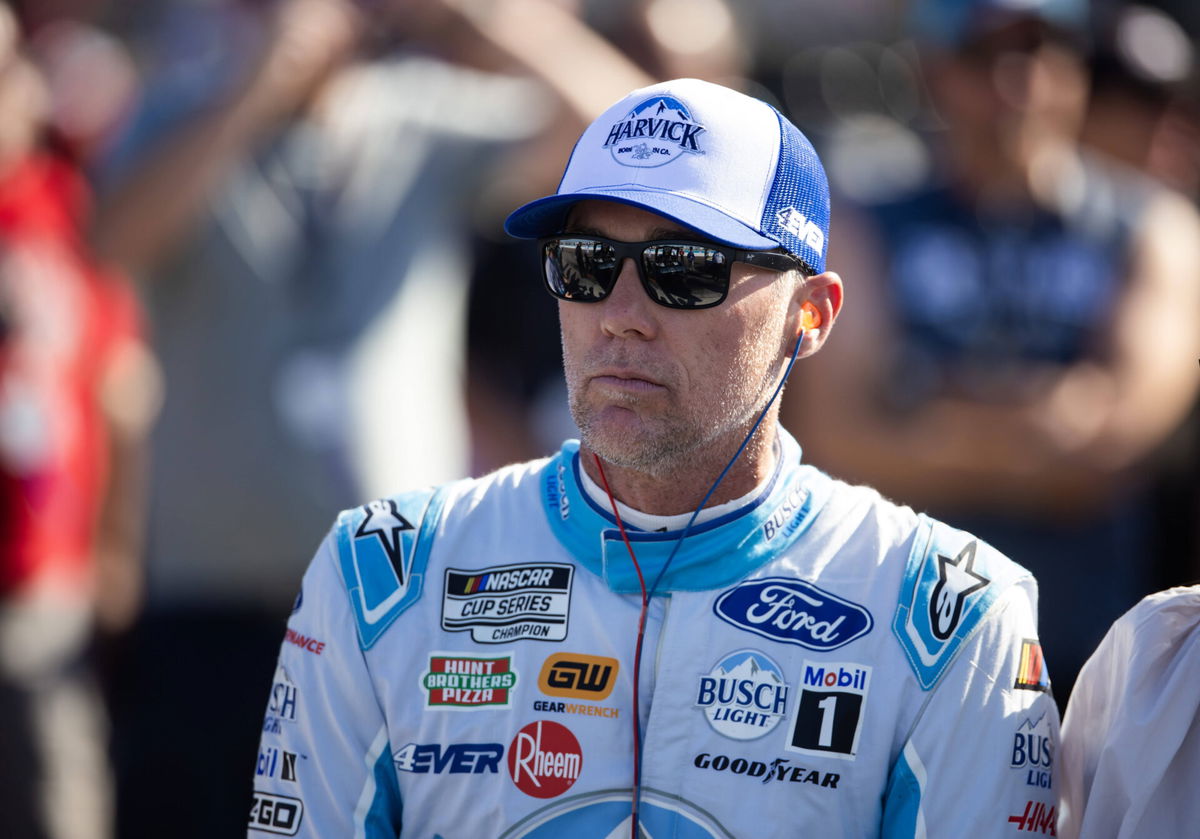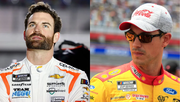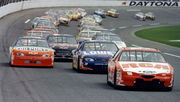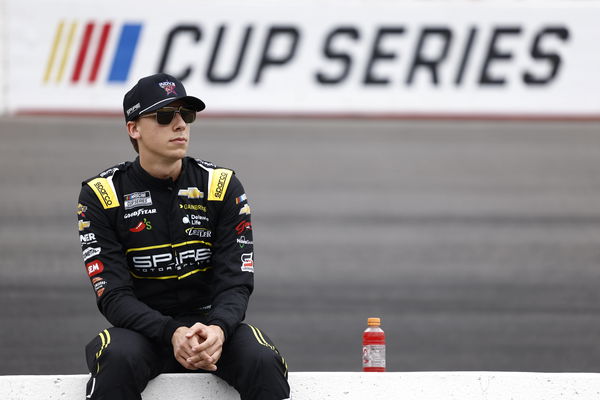
Imago
NASCAR, Motorsport, USA Cup Series Championship Qualifying Nov 4, 2023 Avondale, Arizona, USA NASCAR Cup Series driver Kevin Harvick during qualifying for the NASCAR Championship Race at Phoenix Raceway. Avondale Phoenix Raceway Arizona USA, EDITORIAL USE ONLY PUBLICATIONxINxGERxSUIxAUTxONLY Copyright: xMarkxJ.xRebilasx 20231104_mjr_su5_006

Imago
NASCAR, Motorsport, USA Cup Series Championship Qualifying Nov 4, 2023 Avondale, Arizona, USA NASCAR Cup Series driver Kevin Harvick during qualifying for the NASCAR Championship Race at Phoenix Raceway. Avondale Phoenix Raceway Arizona USA, EDITORIAL USE ONLY PUBLICATIONxINxGERxSUIxAUTxONLY Copyright: xMarkxJ.xRebilasx 20231104_mjr_su5_006
NASCAR has always been a melting pot of talent, drawing drivers from around the world to test their skills on America’s high-speed ovals and intricate road courses. But while some international stars have dominated road courses, they’ve often hit a wall, literally and figuratively, when it comes to ovals. Think of Juan Pablo Montoya, who dazzled at Sonoma but struggled to replicate that magic at Daytona, or Marcos Ambrose, a road course wizard who never quite cracked the code on the ovals. It’s a pattern that’s puzzled fans and pundits alike: why do these road course aces falter when the track turns into a circle?
Watch What’s Trending Now!
The debate isn’t new. Historically, NASCAR has seen drivers excel in one discipline while floundering in another. Tony Stewart, a dirt track legend who was stronger on ovals early in his career but eventually became one of NASCAR’s best road course drivers. Or Jeff Gordon, who dominated road courses like Watkins Glen but was equally at home on superspeedways. These examples show that adapting to NASCAR’s diverse track types is no small feat, even for the best drivers. Now, with international stars like Shane van Gisbergen (SVG) making waves, the question of oval struggles has taken center stage again.
NASCAR legend Kevin Harvick weighed in on this very topic, offering a perspective that cuts through the noise. Known for his candid takes and deep understanding of the sport, Harvick’s words carry weight, especially when addressing the challenges faced by drivers transitioning from road racing to NASCAR’s oval-heavy schedule. But what exactly did he say, and how does it shed light on this ongoing debate? Let’s dive into Harvick’s take and uncover the truth behind the struggles of international stars on ovals.
ADVERTISEMENT
Harvick’s insight into international stars’ oval struggles
Kevin Harvick didn’t hold back when discussing why international drivers like Shane van Gisbergen (SVG), Marcus Ambrose, and Juan Pablo Montoya excel on road courses but often struggle on ovals. “I think a lot of that just comes with what you grew up doing, right?” Harvick said on his Happy Hour podcast. “And you look at SVG, Ambrose, Allmendinger, Juan Pablo Montoya, you know, was in contention to win a lot of oval races.” This acknowledgment highlights that while these drivers have immense talent, their backgrounds in road racing give them an edge on those types of tracks. Whereas ovals require a different skill set they may not have honed as extensively.
For instance, Marcus Ambrose, an Australian driver, won multiple road course races in NASCAR, including two at Watkins Glen, but never secured a victory on an oval. Similarly, Juan Pablo Montoya, a multiple race winner in Formula 1, had success on NASCAR road courses, winning at Sonoma in 2007. But his oval performances were inconsistent, with notable moments like finishing second in the 2009 Daytona 500 but struggling at other oval tracks.
ADVERTISEMENT
Harvick points out that Ambrose “was never in a very good car,” which is the 6-word truth bomb. “I think he would have been very much so what SVG is currently if he was in a car of that caliber,” Harvick added. This suggests that Ambrose’s lack of success on ovals wasn’t due to a lack of talent but rather the quality of the equipment he had. Ambrose drove for teams like JTG Daugherty Racing and Richard Petty Motorsports, which were not among the top-tier teams during his tenure.
In contrast, SVG drives for Trackhouse Racing. A team with significant resources and support, which has allowed him to perform well across various track types. Harvick also praises the racing IQ of these drivers. “Because you got a guy like Marcus Ambrose and SVG, they’re racing IQ is super high, and they’re great learners and great race car drivers at what they do,” he said. This high IQ allows them to adapt and improve, as seen with SVG’s progression on ovals. “I think that SVG has made a lot of inroads on his progression on the ovals, and I think that that is going to continue to happen as he goes forward,” Harvick noted.
ADVERTISEMENT
SVG’s performance on ovals has indeed improved, with notable finishes like his top-10 at Texas Motor Speedway in 2024. Montoya serves as a counterexample, having succeeded on ovals with the right equipment. “Montoya did it. He was in the mix on the ovals by the time, you know, that he wasn’t in the car anymore,” Harvick said.
Montoya drove for Chip Ganassi Racing. A top team, which provided him with competitive cars that allowed him to compete on ovals. This perspective not only explains past performances but also offers hope for drivers like SVG, who are still adapting to NASCAR’s unique challenges. But Harvick’s insights extend beyond track types, as he also weighs in on rising stars like Carson Hocevar, shaping NASCAR’s future.
Top Stories
FOX Earns Rare Moment of Respect as NFL Honors NASCAR Legend Live on Air

NASCAR Radio Host Rejects Denny Hamlin’s Warning Amidst Call for Ex-Fox Broadcaster’s Apology

Corey LaJoie Pokes Joey Logano With Backhanded Dig After Star NFL Appearance

Ford Star’s Future in Doubt as 33-Year-Old Rumored to Jump Ship Amid Contract Uncertainty

Racing Broadcaster Gets Emotional as He Warns Fans Against What NASCAR Has Lost

ADVERTISEMENT
Harvick crowns Hocevar NASCAR’s ‘New Intimidator’
In another segment of his Happy Hour podcast, Kevin Harvick weighed in on the controversy surrounding Carson Hocevar, a Spire Motorsports driver, who has been dubbed NASCAR’s “new intimidator” due to his aggressive driving style. Harvick’s comments came in the wake of Hocevar’s actions at the Chicago Street Race, where he was involved in a multi-car pileup that drew criticism from other drivers.

Imago
NASCAR, Motorsport, USA Cup Series 2025 16. Mai: NASCAR All-Star-Rennen North Wilkesboro, NC USA – May 16, 2025:CARSON HOCEVAR 77 of Portage, MI gets ready to practice for the NASCAR All-Star Race in North Wilkesboro, NC. LicenseRM 23679339 Copyright: xZoonar.com/GrindstonexMediaxGroup/ASPInc./StephenxArcex 23679339
Harvick defended Hocevar, saying, “He’s got a lot of talent, and he’s not afraid to use it.” This support comes despite Hocevar’s reputation for making enemies on the track. With drivers like Austin Dillon calling him “the biggest dumb— in NASCAR” after the Chicago incident. Harvick’s backing highlights his belief in Hocevar’s potential, even if his methods are controversial.
ADVERTISEMENT
The comparison to “The Intimidator,” Dale Earnhardt Sr., is apt, as both drivers are known for their no-holds-barred approach to racing. Earnhardt’s aggressive style made him a legend, but it also made him enemies. Similarly, Hocevar’s willingness to push the limits has earned him both admirers and detractors. As Harvick puts it, “That’s racing. Sometimes you make friends, sometimes you make enemies.”
In conclusion, Harvick’s defense of Hocevar underscores the fine line between aggressive racing and recklessness. A debate as old as NASCAR itself. Whether Hocevar will follow in Earnhardt’s footsteps or face backlash remains to be seen, but Harvick’s support adds weight to his potential as a future star.
ADVERTISEMENT
ADVERTISEMENT
ADVERTISEMENT
ADVERTISEMENT

